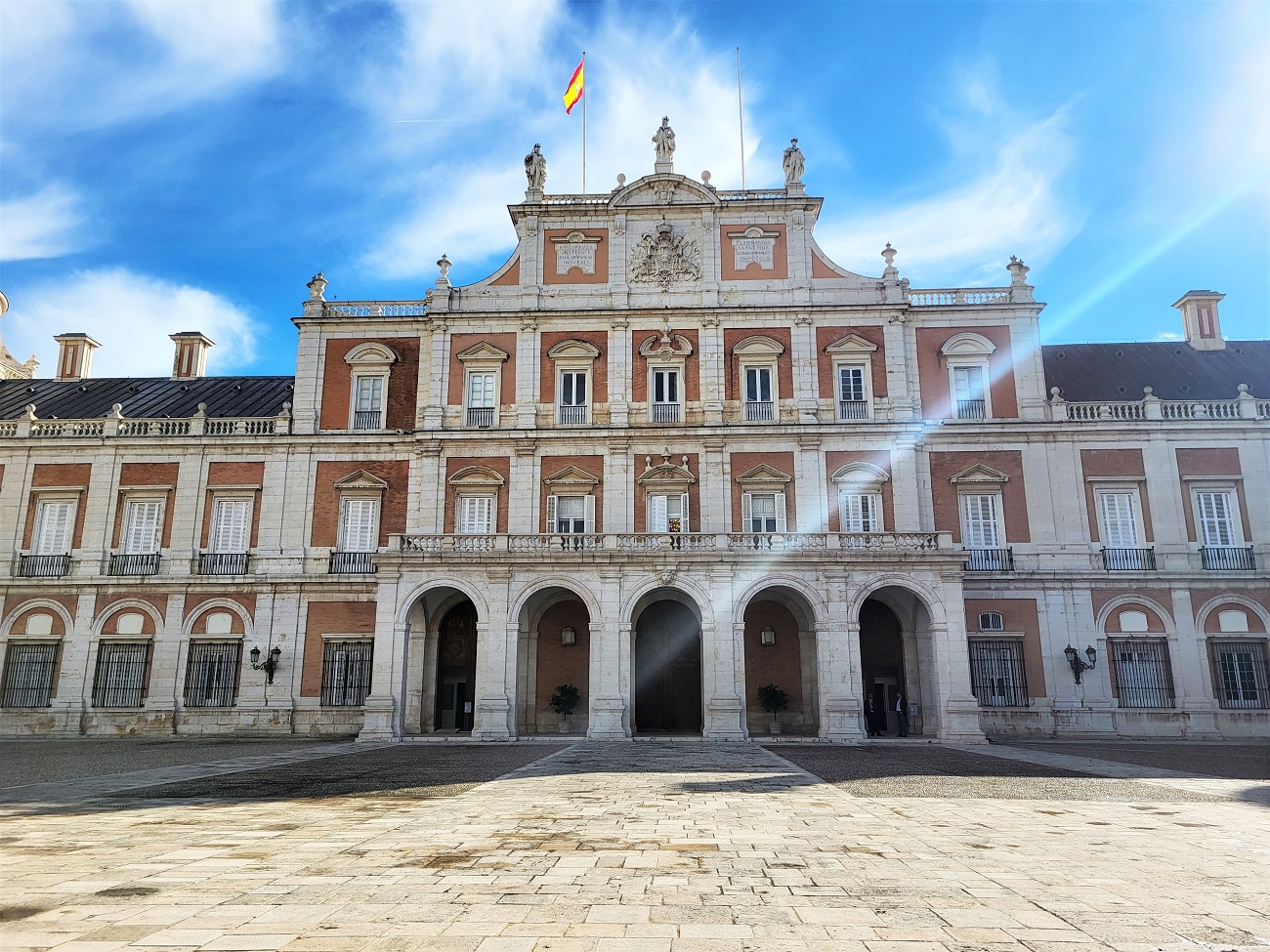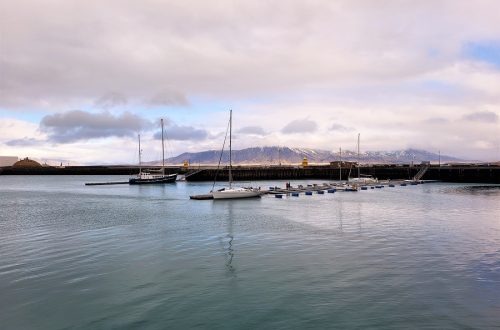Some 45 minutes to the south of Madrid, you’ll find the city of Aranjuez, home to the Royal Summer Palace and Gardens.
The city is where the Spanish royal family used to decamp after Easter, taking up residence in its leafy surroundings until June.
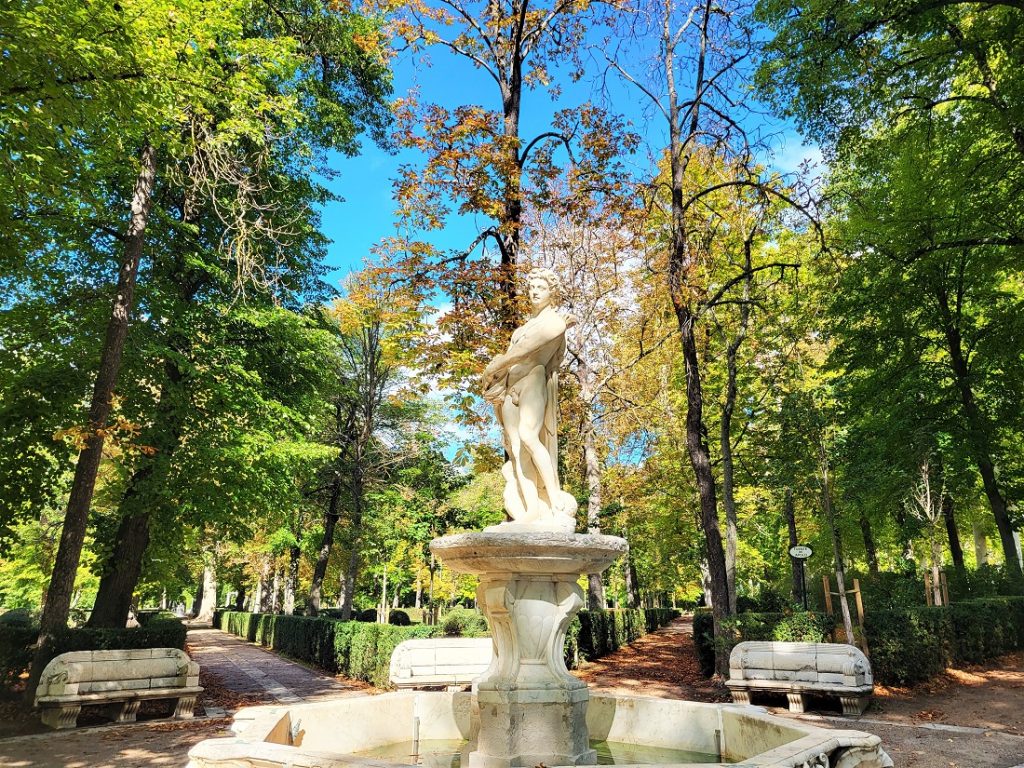
The palace was originally built by the Order of Santiago after the conquest of the Moors and passed to Isabella I at the end of the 15th century.
Emperor Charles V had long dreamed of turning Aranjuez into an Italianate palace, and in 1560 his son Felipe II set about making this dream a reality by building a new palace.
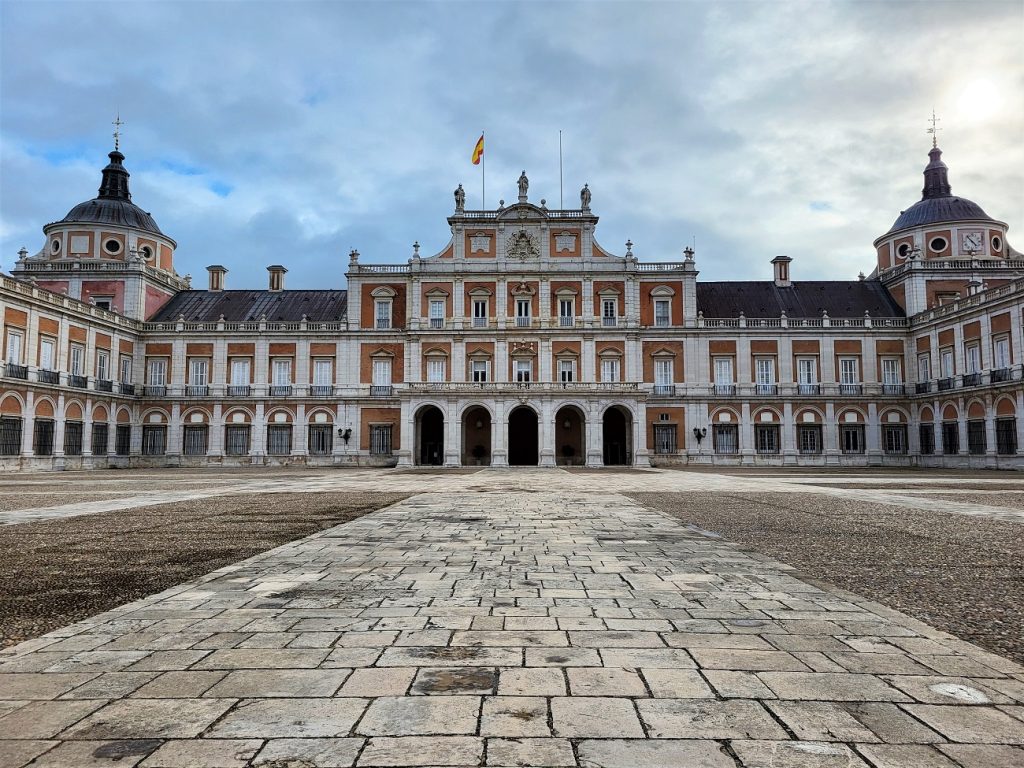
Felipe II never finished his plans and it wasn’t until Ferdinand VI came along that the palace was finally completed in 1752.
Carlos III then decided to add two huge wings in 1775 to create the massive u-shaped building we see today.
The white stone and red brick palace, its sprawling gardens and the wider city of Aranjuez are now a UNESCO World Heritage Site.

Arriving at Aranjuez train station, I walked the short distance to the royal palace, some 15 minutes away, then headed inside.
Like the Royal Palace in Madrid and El Escorial, you’re not allowed to take photos inside once you’ve passed through the palace courtyard and climbed the staircase (below).
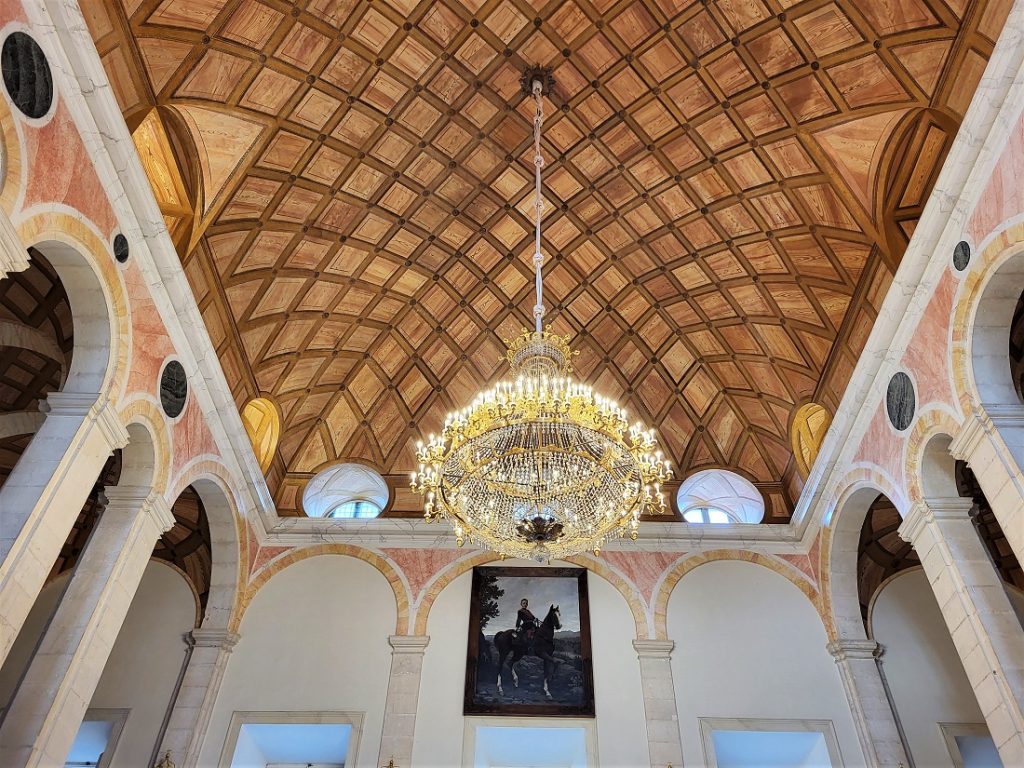
And like the royal palace in Madrid, the royal palace of Aranjuez is a lavish, sumptuous and ornate affair.
It’s a spectacular building and as I looked around, there were a fair few rooms that made me go ‘Wow!’.
Whoever designed it seemed to have had a lot of fun, as it’s a riot of colour and unusually imaginative for a palace.
One of the most memorable sights was the room decorated entirely in porcelain and its gobsmacking porcelain chandelier.
Not all the rooms were decorated to my taste. While the queen’s bedroom boasted an incredible four-poster bed, opposite it was a portrait of a martyred Jesus Christ – not the image I’d want to wake up to every morning.
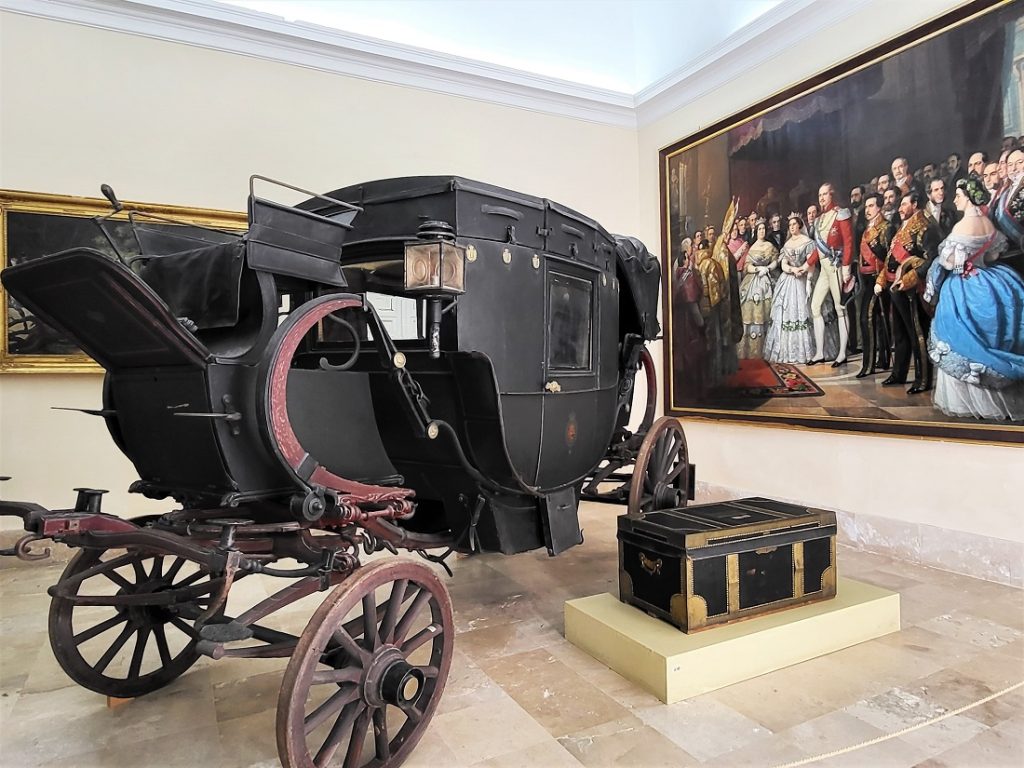
The self-guided tour ends in a room with a carriage (above) and an exhibition featuring clothes worn by Juan Carlos I and Queen Sofia, plus the wedding dresses of Queen Letizia and the Infantas Elena and Cristina.
Letizia and Sofia’s dresses were beautiful and the workmanship involved was exquisite.
But Elena and Cristina’s dresses were dull, unimaginative and rather matronly in comparison (although I’m sure they probably cost a small fortune!).

I was quite peckish after my visit to the palace, so I set off on a stroll through the centre of Aranjuez and eventually stumbled upon a lovely little place, Gustare Bocateria.
The staff were friendly and helpful, and I enjoyed a delicious jamon iberico tostada with crushed fresh tomatoes and olive oil, along with a glass of freshly squeezed orange juice (above).
I was astonished when the bill arrived and it came to just €5, as I’d been expecting to pay closer to double that.
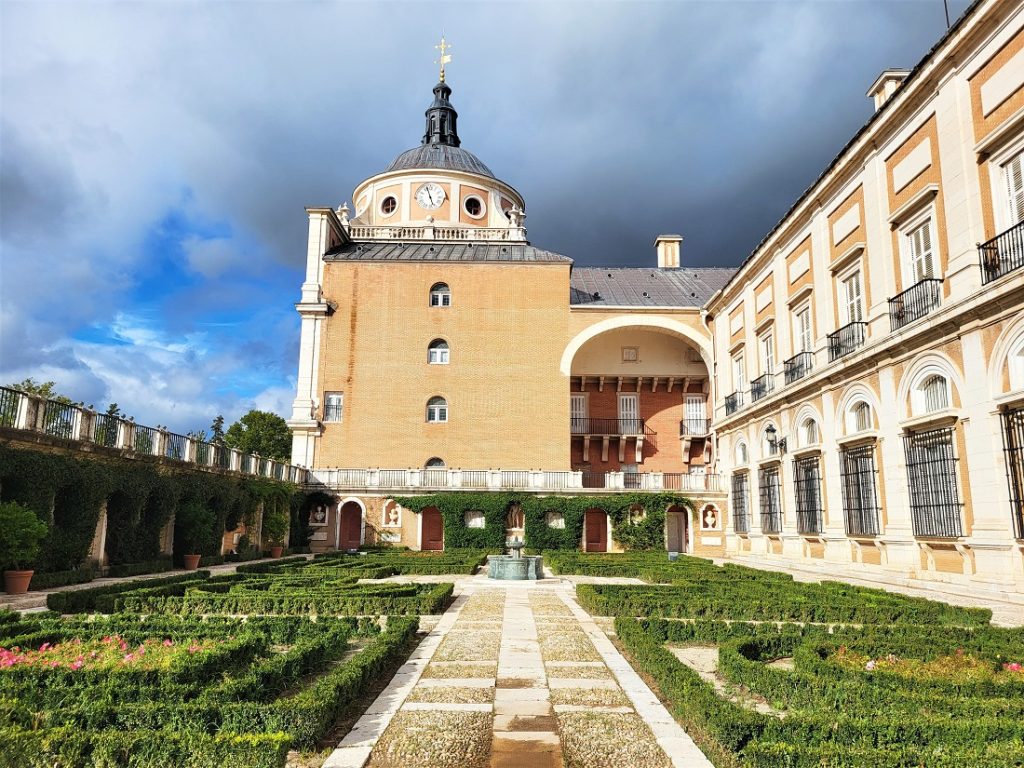
Feeling sated, I made my way back towards the palace to explore the enormous gardens that surround it.
My first stop was the French-style Parterre de Palacio, which was founded by Felipe V in the early 18th century.
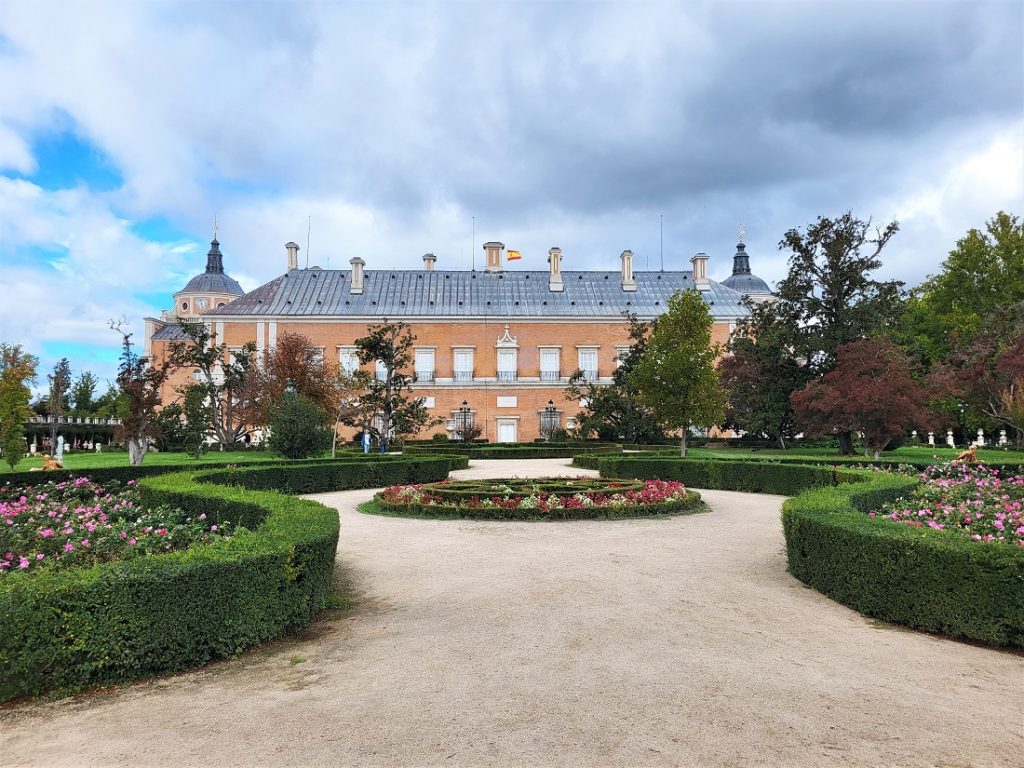
The Parterre Garden is a pretty formal garden with perfectly manicured hedges and flower beds, and a host of statues and fountains.
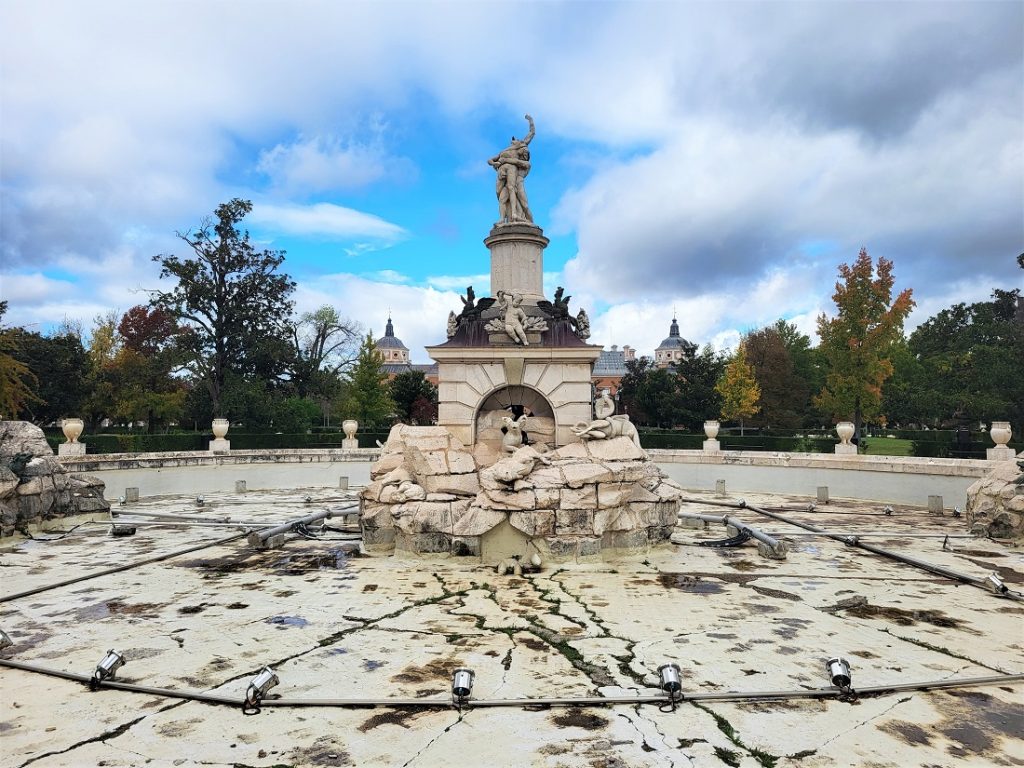
Many of the fountains were empty and they looked rather sad and forlorn without any water (above).
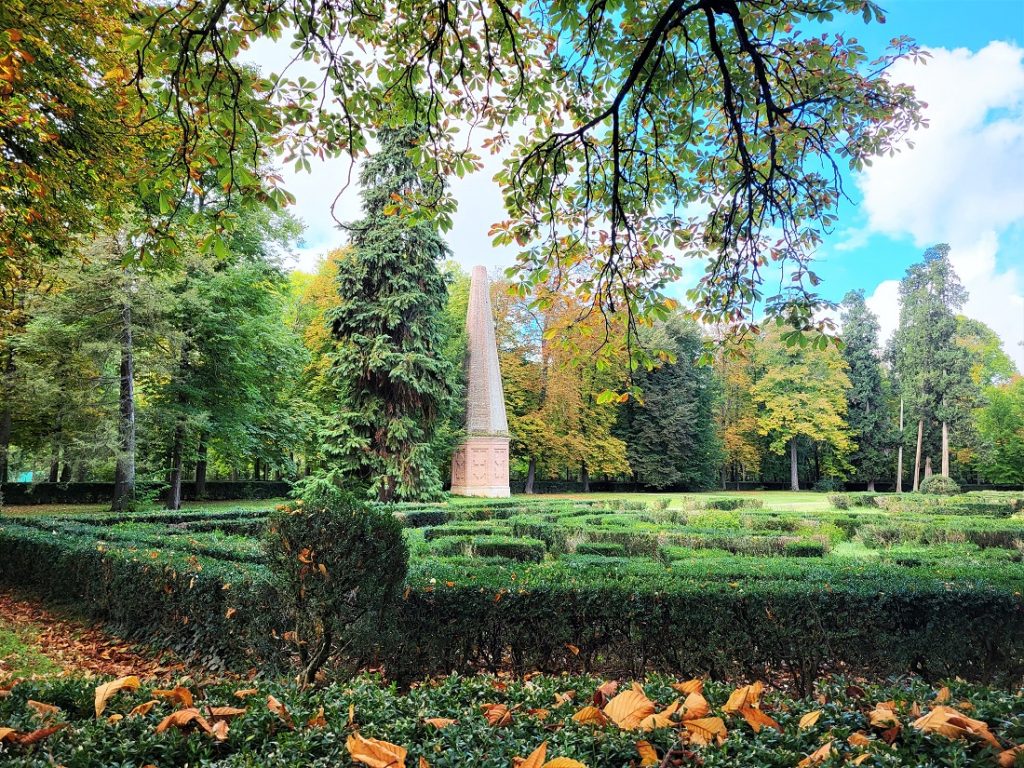
From the Parterre Garden, I headed to the Jardin de la Isla (Island Garden), which was created by Felipe II in the late 16th century.

The garden, which sits on an island in the middle of the Tagus River, is filled with trees and laid out in a grid pattern.
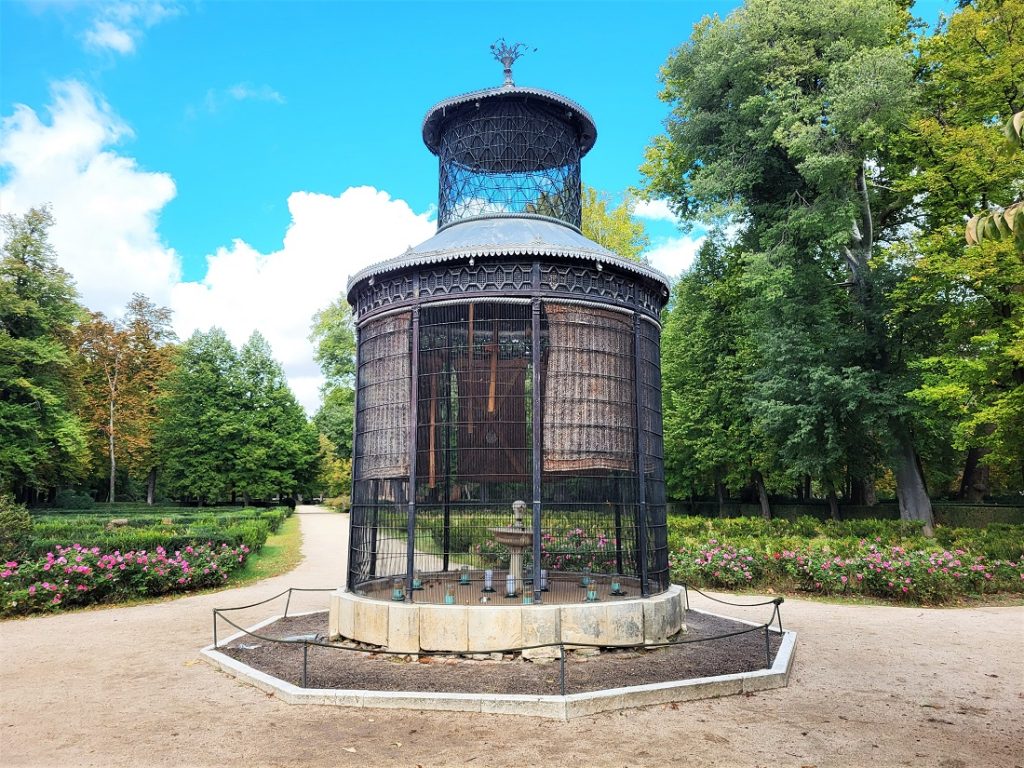
It’s home to a number of fountains and interesting features, including a massive bird cage (above) and a tall chimney-type structure.
The huge, leafy garden was a pleasant and peaceful space, but I felt it could do with a nice little café where you could stop for a drink and a sit down.
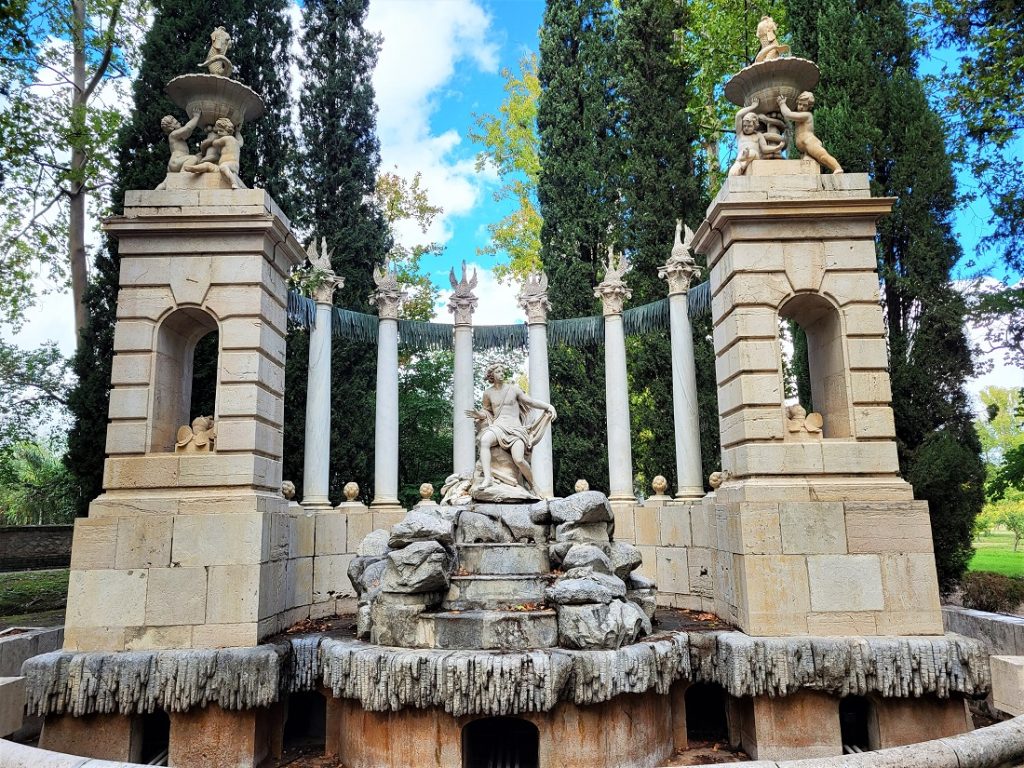
From the Jardin de la Isla, I made my way to the Jardin del Principe (the Prince’s Garden), a short walk away.
The quiet garden, which is flanked by the Tagus River, is enormous and easy to get lost in, as there are very few signs and maps to help you find your way around.
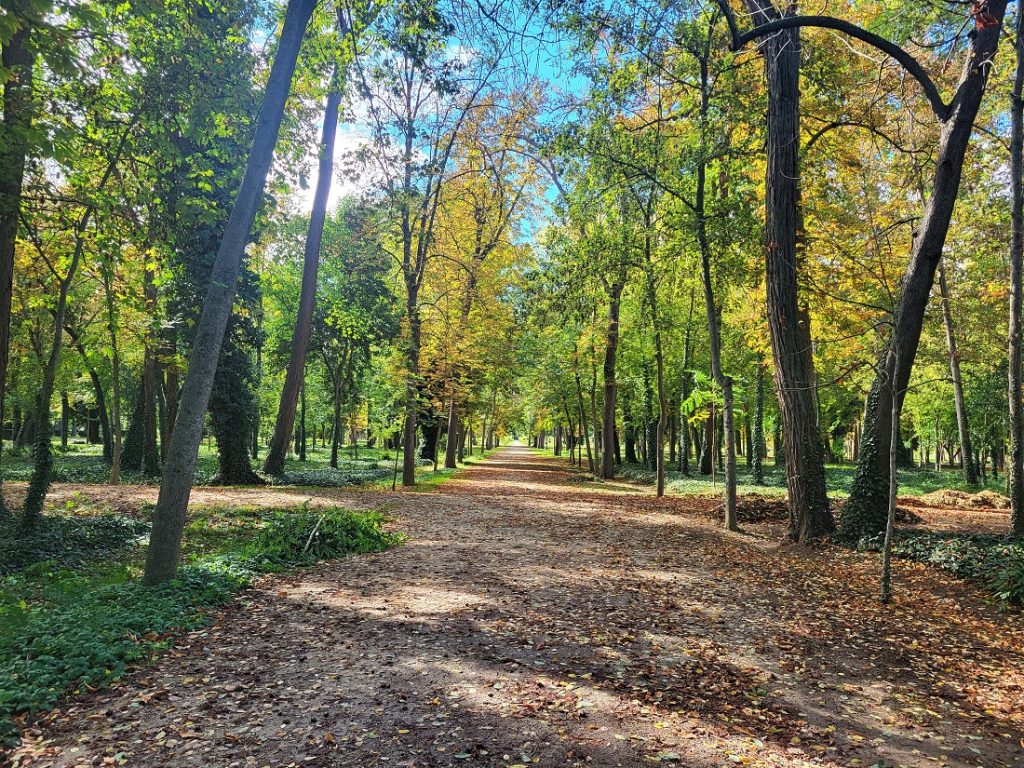
Founded by Carlos III’s heir, the future Carlos IV, in the 1770s, it’s a maze of tree-lined avenues (above), and a wonderful place to escape for a few hours.

The garden is the setting of the Royal Barges Museum (above), which is free to go inside if you have a ticket for the royal palace.
The museum displays six or seven barges that were once used by the royal family to sail along the Tagus.
The barges were phenomenal and I was taken aback by the work that had gone into crafting them. The ornate decoration was quite something to behold.

The extensive Jardin del Principe is also home to beautiful fountains, including the Fountain of Narcissus (above), and some charming red squirrels.
My favourite part of the garden was the striking Chinese pond (below), which features a temple, a duck house and a series of fountains.
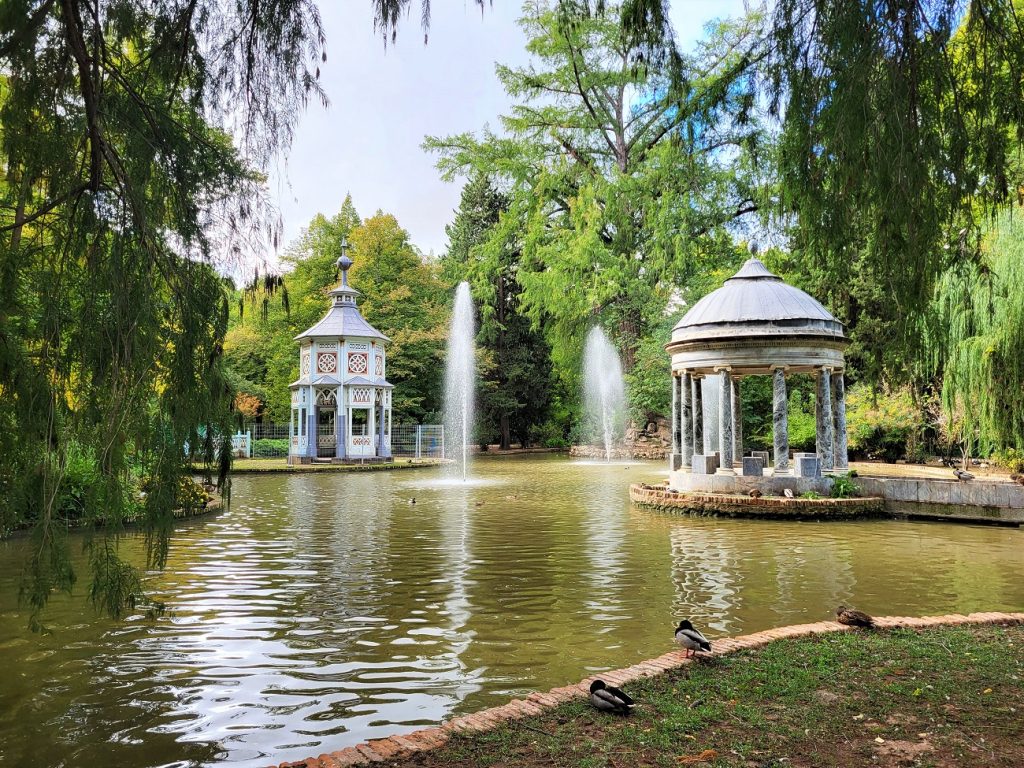
The far end of the park houses Casa del Labrador, a Petit Trianon-style mansion built by Carlos IV.
The palace is said to be jaw-dropping inside and dripping with riches. Sadly it was closed when I visited, as was the surrounding area, so I didn’t get to experience its splendid interior.
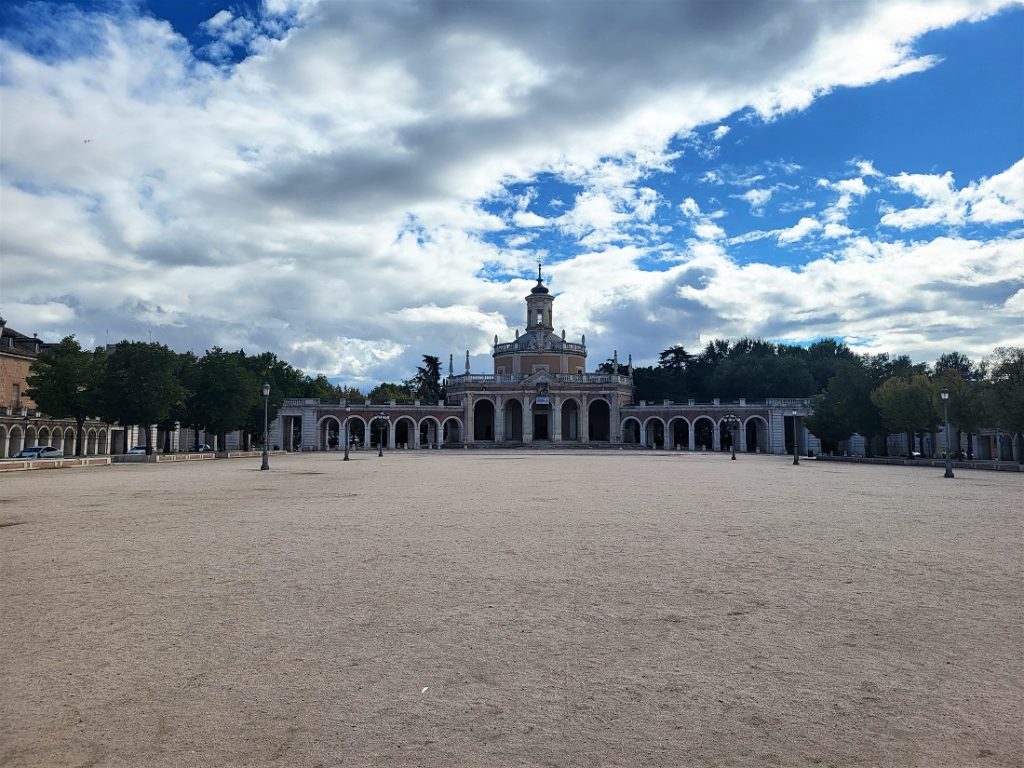
Having seen all there was to see in the park, I made my way back towards the royal palace, stopping to admire the nearby Iglesia de San Antonio (above) and the Mariblanca fountain (below).

I really enjoyed my visit to Aranjuez, the palace is delightful and well worth a visit, and I spent a relaxing afternoon exploring the extensive grounds. It’s a great day trip from Madrid.
Info
- To visit Aranjuez from Madrid, hop on the C-3 metroline from Atocha station.
- The journey takes around 45 minutes to an hour, and I’d recommend buying your ticket from a cashier at the station as the ticket machines can be confusing.
- You can buy your tickets for the palace from a machine inside, but make sure you pick up your ticket. I used the machine to buy my ticket, but must have unwittingly picked up the receipt rather than the ticket. The man at the palace entrance was very nice about it and let me in, but probably best make sure you have the ticket in case not all the staff are as kind.

